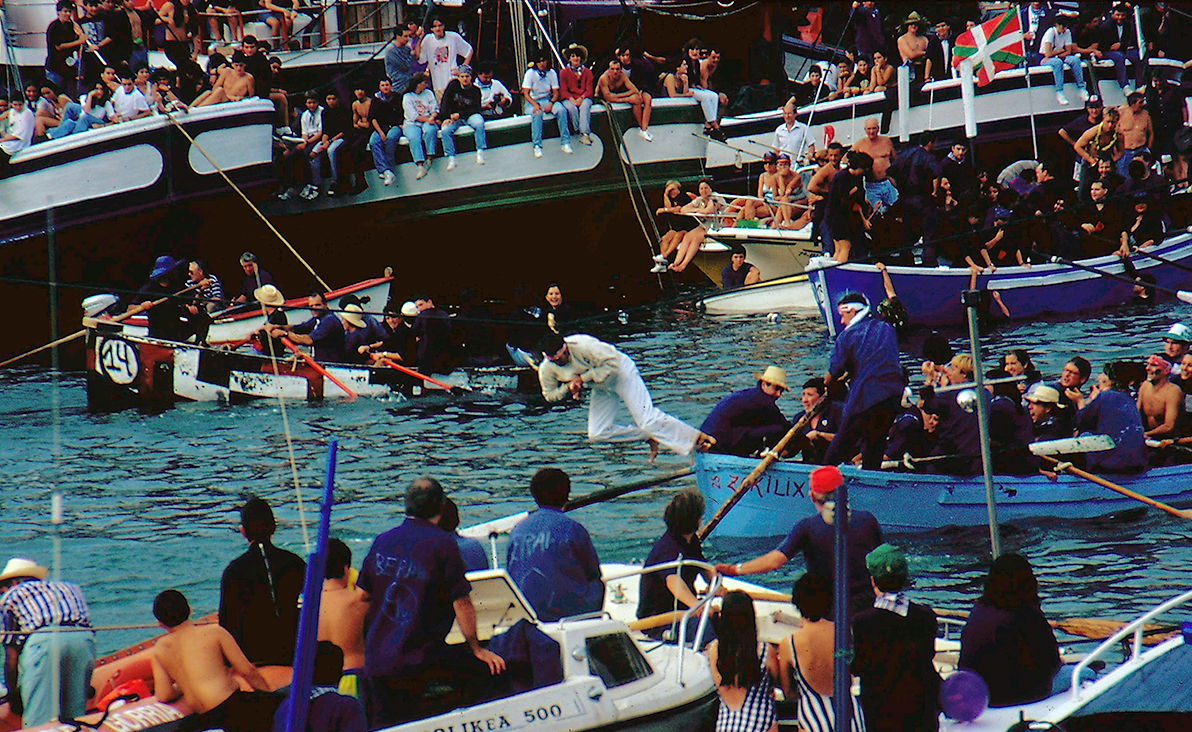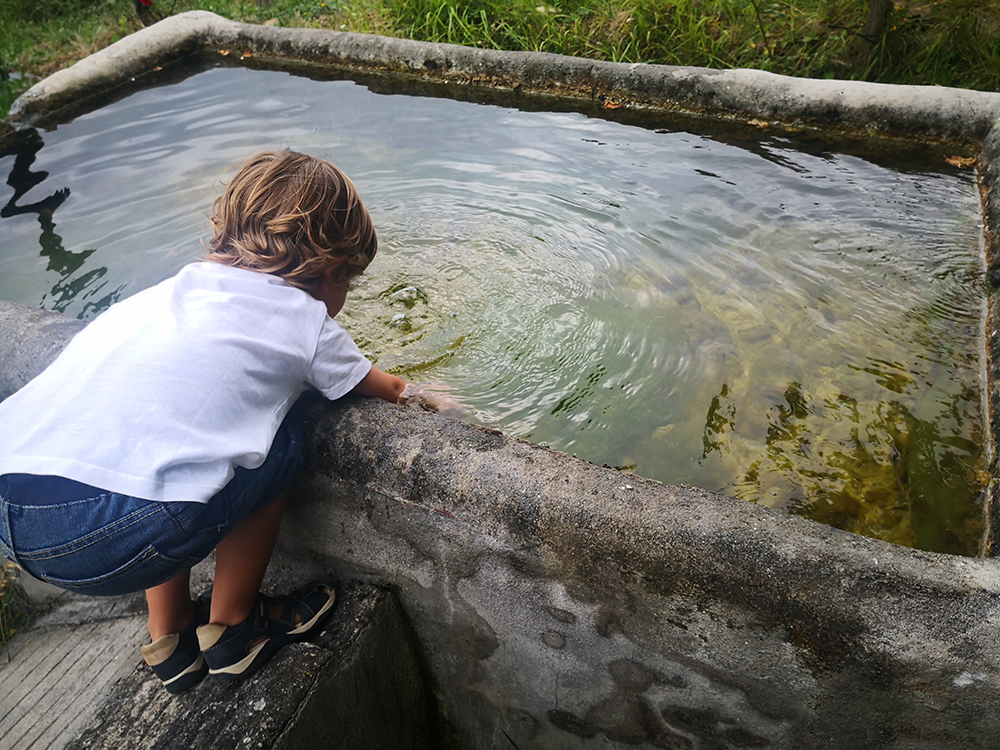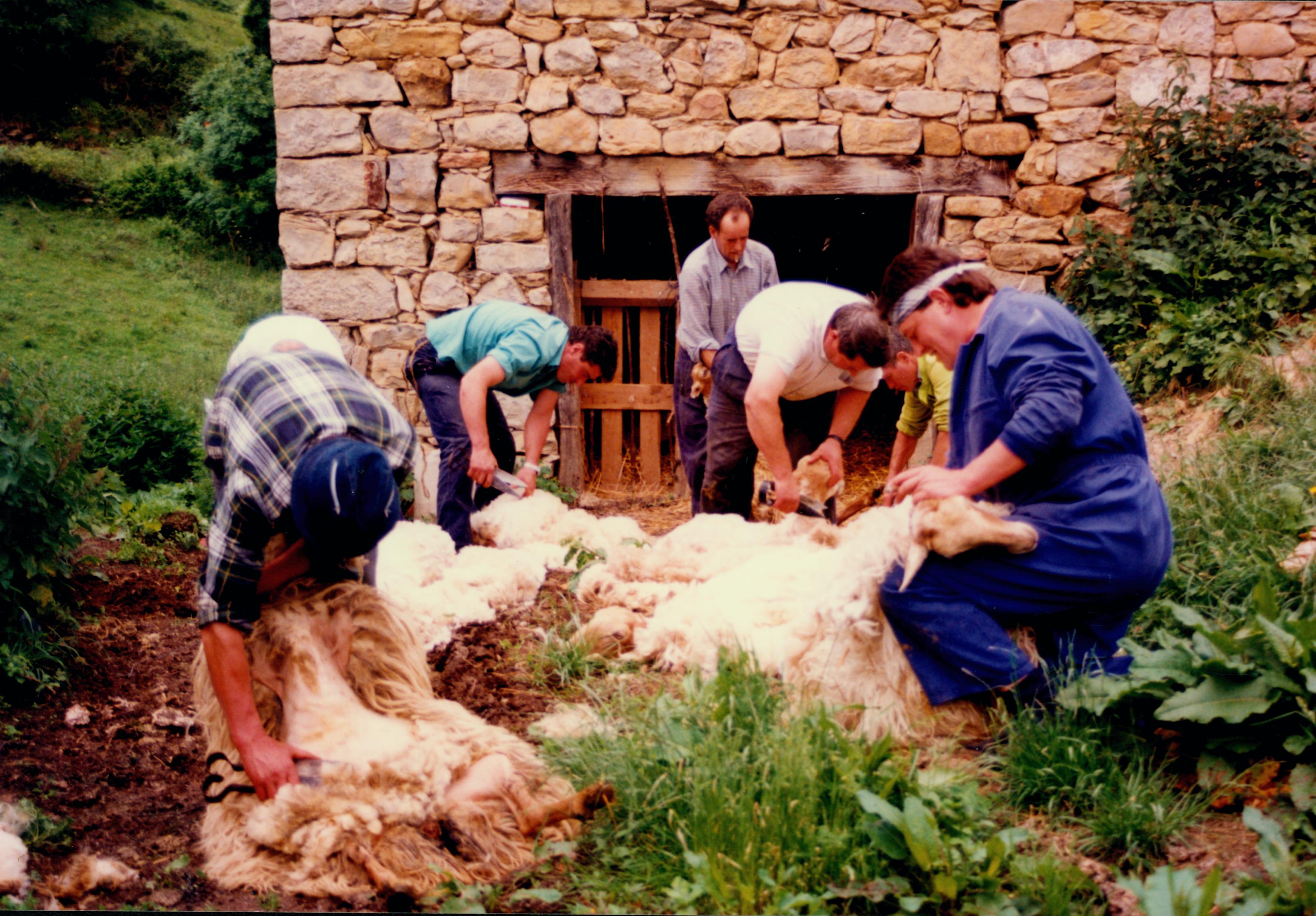Basque ethnography at a glance

Day of the geese. Lekeitio (Bizkaia), 1995. José Ignacio García Muñoz.
Saint Roch and Saint Antoninus were the patron saints of the fishing port of Lekeitio, in Bizkaia, up to the 18th century, when the papacy asked for patronal festivals to be reduced and a random drawing finally tipped the balance in favour of the latter. St Antoninus’ Day is celebrated on 2 September, controversial goose pulling, on 5 September, having taken over as the big attraction among visitors who flood in to enjoy the numerous events that take place during the feast days. (more…)

Agintarien mahaia. Table of authorities by José Arrue. Courtesy of Orozkoko Garrafa Kultur Elkartea.
Cannot beat a nice cold drink on a hot summer day!
But, believe it or not, drinking iced beverages was not customary in ancient times. It was not until the 14th century that physicians incorporated ice into their practice, arguing that it cured burning fevers and protected against the plague. (more…)

Looking for tadpoles. Ziortza Artabe Etxebarria. Labayru Fundazioa Photographic Archive.
Haurrak haurlan, goes a popular Basque saying, that is, play is the ‘work’ of childhood. And traditionally most of that play took place out in the open air.
In their playtime children interacted with animals. Ladybirds, for instance, were thought to be able to predict the weather. They would place the precious insect on the forefinger, and while it climbed up, said the following words:
Marigorri, gona gorri,
bihar eguzki ala euri? (more…)


